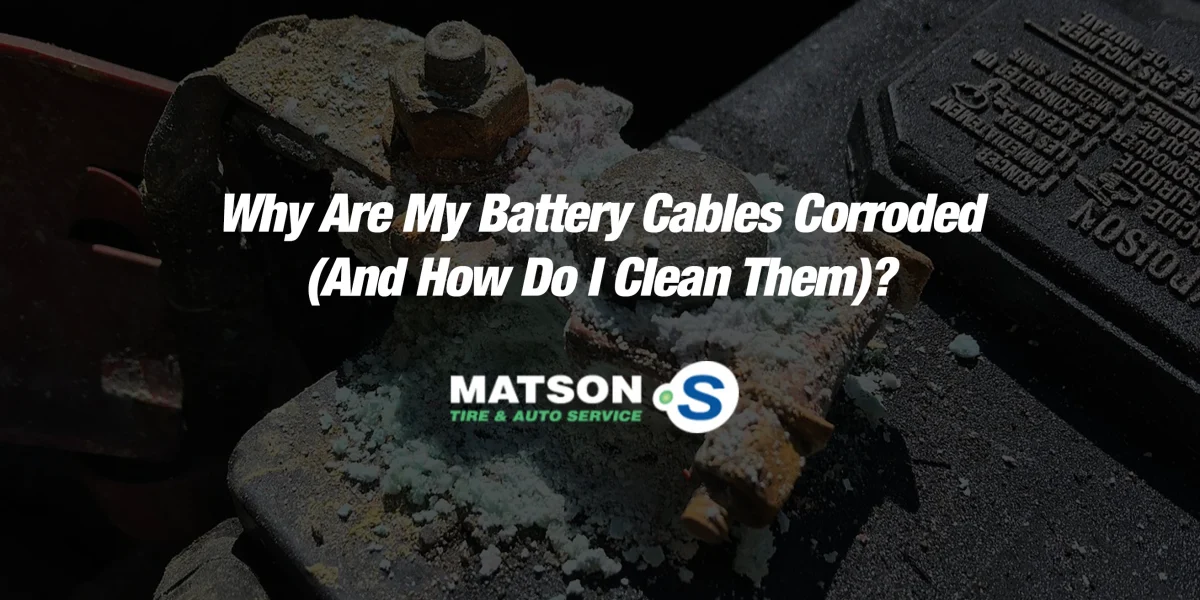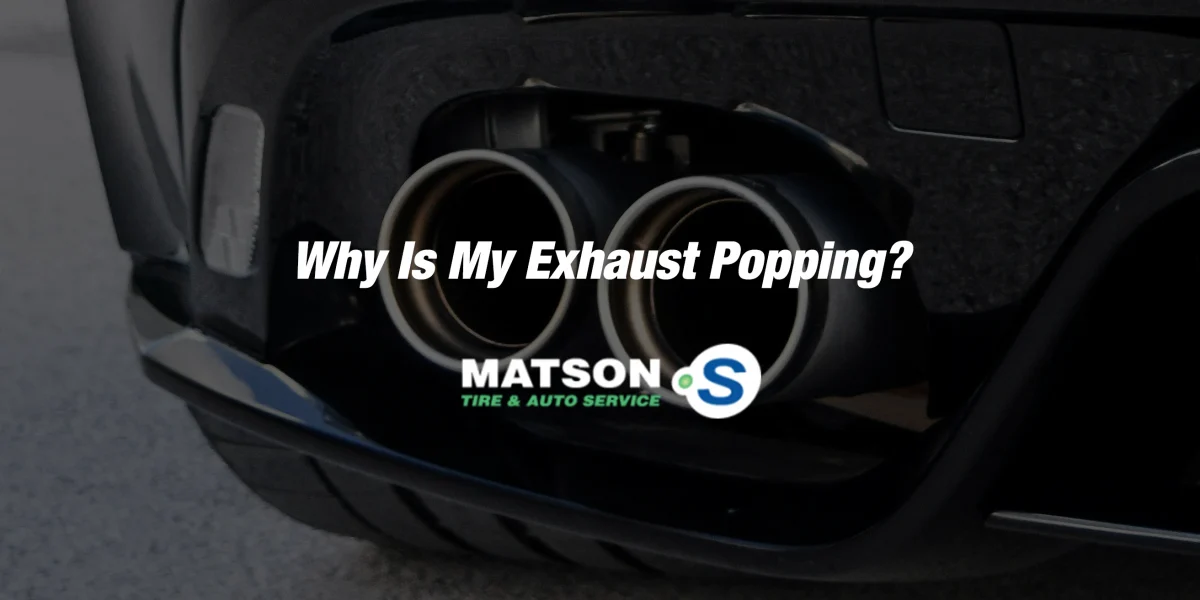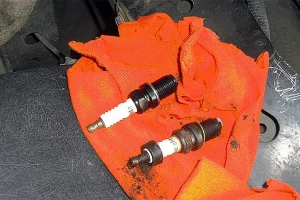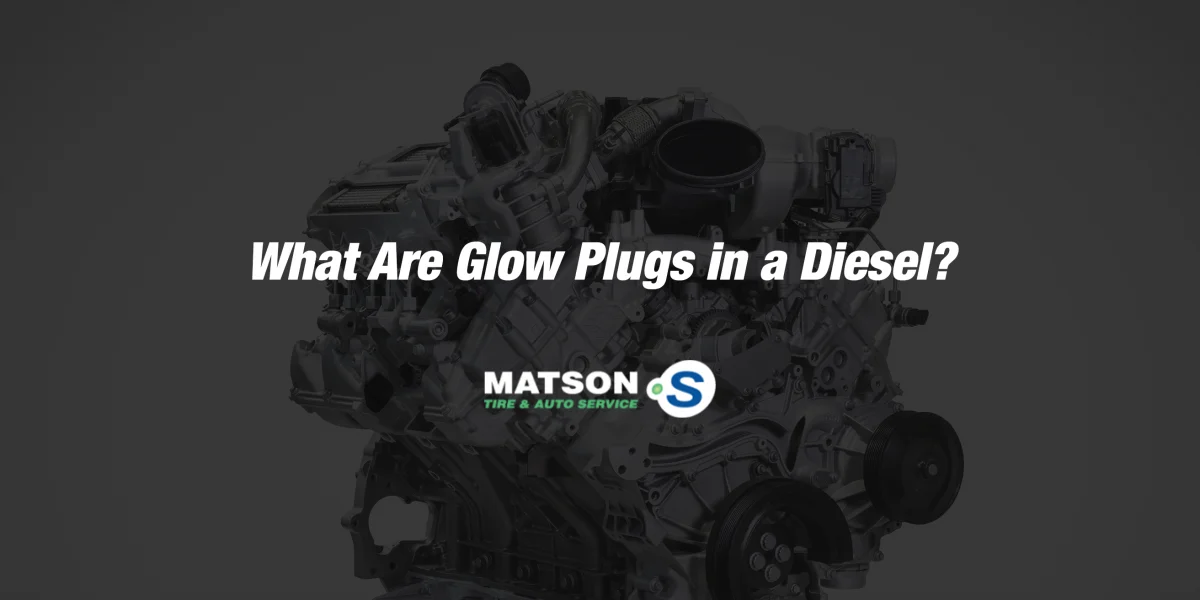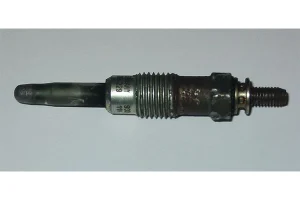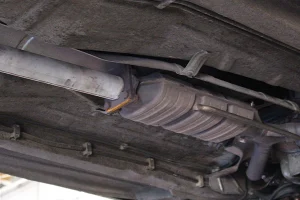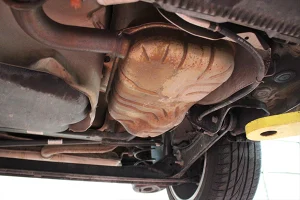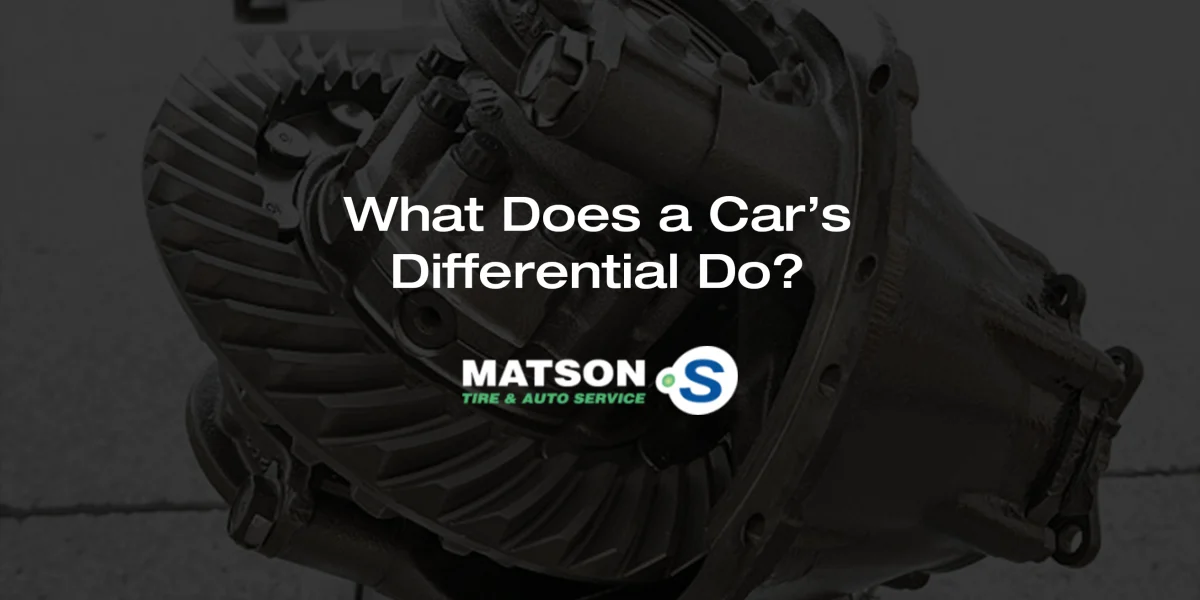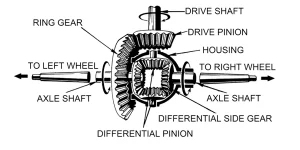It’s not uncommon to open your hood to the unsightly scene of corroded battery cables/terminals, with whitish-blue crystals seemingly growing from parts of your battery. This is a frequent occurrence in cars despite the worrying appearance, but still doesn’t mean it should be ignored.
What’s Leaking From My Battery?
The bright crystals developing on the battery terminals result from a chemical reaction. Automotive batteries take chemical energy and convert it to electrical energy to be used by your vehicle, however, this process causes the sulfuric acid inside to release hydrogen gas. This hydrogen mixes with the outside air, moisture, and salt causing a corrosive reaction.
Corrosion will be easy to spot with its powdery texture and bright blue/green color and will typically build up on the battery’s posts, terminals, or cables.
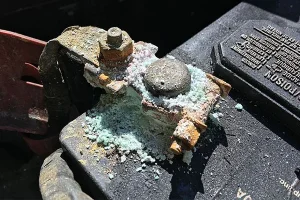
Why is Battery Corrosion an Issue?
While this corrosion buildup isn’t necessarily harmful immediately on its own, allowing it to continue to grow and corrode the crucial battery connections can lead to frustrating issues if left unaddressed.
As the chalky crystals continue to accumulate, it can cause incomplete connections in the battery and charging system leading to unpredictable electrical issues. Not only can it create blockages between electrical connections, it can corrode the cables or terminals so badly as to permanently damage them beyond repair.
What Causes Battery Corrosion?
Leaking Casing
Maybe the most obvious cause of corrosive battery acid leaking from its casing and corroding is, well… a leak. These can occur for a multitude of reasons, but any physical damage to your battery may lead to leaks developing and subsequently corrosive compounds building up on the terminals.
There’s no one specific reason your battery casing may crack, as this can occur due to impact, weather, or age. Unfortunately, a battery with physical damage will need to be replaced and cannot be repaired.
Overcharging/Undercharging
The battery and charging system in your vehicle is a delicate balance, as either overcharging or undercharging the battery cells can cause adverse effects. Whether this be due to a fault alternator, voltage regulator, or other component, improper charging will lead to corrosion in the future.
When overcharging the battery, the sulfuric acid and water mix in the battery will begin to boil. This gas can build up in the casing and cause unsafe pressure as well as corrosion buildup on the terminals.
Corrosion from overcharging will often accumulate on the positive terminal, while undercharging does the opposite and usually appears on the negative terminal. If you suspect a charging problem in your vehicle, an automotive professional can test the outputs of the charging system and give you a comprehensive answer on the next step.
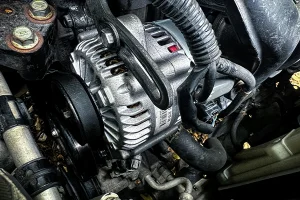
Overheating
One of the largest contributors to corrosion in car batteries everywhere is overheating. When these batteries reach high temperatures, they begin to boil and evaporate internally in a similar way to overcharging. This also leads to the same issues, with corrosion building up on the terminals and cables.
High heat in combination with overcharging is the ultimate battery killer and should be avoided entirely. It’s always a good idea to keep an eye on your electrical system over the summer.
How Do I Clean My Battery Terminals and Cables?
Cleaning your battery connections is a relatively simple process and will prevent any disruptions from corrosion buildup.
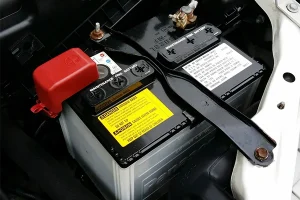
Step 1: Gear Up
If you haven’t already gathered that, battery acid and its corrosive byproducts are not something you’d want on you. Gearing up with protective eyeglasses and thick rubber or latex gloves is the best way to avoid getting these chemicals where they shouldn’t be. It’s important to remember to wash any corrosive material that gets on your clothes or skin immediately.
Step 2: Remove Cables From Terminals
Begin removing the cables from the battery, starting with the negative terminal. After releasing the clamp, move the cable far away from the battery to prevent it from slipping back onto the terminal. Repeat the same process for the positive terminal. If you’re using a battery memory saver, make sure that’s plugged in and active before disconnecting.
Step 3: Begin Cleaning
This can be done with the battery still bolted down, but for maximum safety remove the battery from the vehicle and place it in a shallow tray to catch debris. Using a wire brush (or an old toothbrush), begin scrubbing the powdery substance from the terminals and cable ends. Because this kicks up significant dust, it’s best to do this in a well-ventilated area and use a fan to circulate air.
Step 4: Finish and Neutralize
Now that we’ve removed the big stuff, it’s time to get our battery terminals looking like new and neutralize the corrosive gunk. For this, you can use either a battery terminal-specific cleaning solution or a DIY mixture of baking soda and water. Dip a rag in the chosen cleaning solution and start wiping the terminals and surrounding areas to get the remaining residue removed. When clean, repeat this on the cables or dip the tips into the neutralizing solution to ensure all corrosive buildup is gone.
Step 5: Dry and Reconnect
When finished with your cleanup, follow up with a dry rag to polish and remove any lingering dust. Begin reconnecting the battery from the positive terminal first this time and tighten it securely, then repeat on the negative side.
Congratulations, you now have a corrosion-free battery ready to fire right up in the morning!
How Can I Avoid Battery Corrosion?
Luckily, there are a few steps you can take proactively to protect yourself from harmful battery corrosion.
Have Your Charging System Tested Occasionally
As mentioned earlier, taking your vehicle to a trusted professional and having them test your charging system while taking care of your other general maintenance services is the best way to ensure your battery is not being over or undercharged.
Protect Your Terminals
Using petroleum jelly, or an automotive-specific solution from any parts store, to cover your battery terminals provides great protection from corrosive compounds while giving you the strongest electrical connection possible.
Battery & Electrical Services in Riverton, Utah
If you suspect an issue with your battery or charging system, bring it to the trusted experts at Matson Point S in Riverton. Our ASE Certified technicians will check each output and ensure the systems of your car are receiving the proper amount of power.
Give us a call or schedule an appointment online with us today to talk with our friendly team and knowledgeable service advisors!

